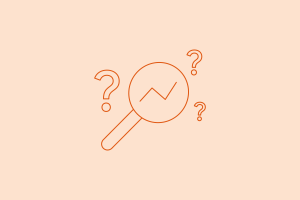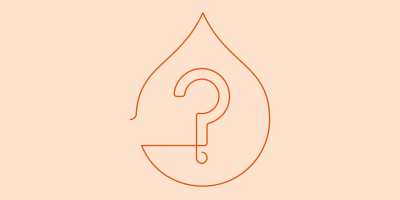
Collection
How to Choose a Customer Data Platform

Collection :
Every day, data builds or breaks a customer’s experience. A data point might be the most recent item a customer favorites on your e-commerce site, or it could be as simple as their name — get either wrong, and a customer may block your emails or click away to a competitor's site. The difference between building and breaking that customer experience comes down to properly organizing and using customer data.
What helps: a customer data platform (CDP) that lends rhyme and reason to your customer data. Mountains of customer data simply aren’t helpful without purpose, intent, and definition. CDPs were built to help solve the problem of unruly customer data, providing organizations a single source to manage data that might otherwise be chaotic.
That way, you could use customer data to create relevant experiences based on what you know about your customers. Of course, CDP solutions aren’t one size fits all, so find and select a CDP that matches your needs and goals. Below are six common steps to follow when looking for a CDP for your organization.
Steps to choosing a CDP
Unlike CDP solutions and use cases, which are as diverse as the companies that need them, the steps involved in choosing a CDP don’t vary widely. They’re established best practices that savvy organizations commonly adhere to with great success — you can too. Let’s dig into them.
1. Get teams involved across departments
Acknowledge that customer data impacts a variety of departments across your organization, so no one person or team should control choosing a CDP. Instead, you may want to create a buying committee composed of representatives from the departments that will regularly use the CDP.
Sales, marketing, and customer success, for instance, all command different parts of the customer journey so will use different data at different junctures. So, while various parts of the customer journey have the same goal — to close the sale — each CDP user may have differing needs. They should have a say in choosing the platform that best meets their goals. Be sure to give all primary users a seat at the table.
Establishing a diverse buying committee will also prevent or break down departmental silos, facilitating greater organizational cohesion and camaraderie.
2. List your core CDP requirements
Next, identify exactly what your organization needs your CDP to do. Because this question walks hand-in-hand with use cases, you may produce a long list of requirements from more tailored customer journey mapping to omnichannel marketing strategies — but try not to get carried away.
And remember: There’s a reason we call them core requirements. Twenty-five “core” CDP requirements, for instance, is too broad; you’ll end up frustrated when you can’t meet them all.
Instead, start with the most crucial customer data platform requirements — perhaps three to five — that apply to your organization, such as:
- Tight data security and compliance
- Integration with existing martech systems
- Automations and workflow customization
Naturally, these will look different for every organization, but you still need to find a balance between identifying too many versus none at all. Really drill down on the most important goals you want your CDP to achieve and the requirements you need to get there.
3. Outline the customer data platform capabilities you need
Next, you’ll want to match use cases with a wish list of CDP capabilities. The last thing you want is to end up with a CDP that can’t get you where you want to go. For example, do you have customer data integration requirements?
Review the CDP Institute’s list of capabilities that every organization should consider even if you don’t need them all. A few include:
- Data quality and identity management
- Online and offline data storage/management
- Reporting
- Analytics and machine learning
- Data actionability
Within each capability, you can further pinpoint specifics that apply to your core use cases and narrow your criteria from there.
4. Determine integrations needed
With the average department using 87 SaaS applications, and businesses using an average of 371 total SaaS apps, it’s safe to say that technologies that play nicely with each other is an important part of the buying process.
Because a CDP is a customer data hub, yours should be compatible with the rest of your tech stack so that it can do its best work. The pre-existing systems you keep in place set the tone for choosing a CDP.
Don’t uproot everything for a new, incompatible CDP. Study the options until you find one that works well with existing systems and can seamlessly integrate.
5. Compare customer data platform features and solutions
Any purchase involves comparing options. There are more than a dozen CDP vendors, including Acquia, that fulfill all the core capabilities that the Customer Data Platform Institute requires to receive RealCDP certification.
You’ll likely learn a few customer data platform capabilities that are shared between solutions, so ask yourself which capabilities, features, and factors tip your scales? To answer that question, prepare a rubric for choosing a CDP with categories like:
- Must have
- Nice to have
- Don’t need
Mix all of that together with pricing, security features, and support quality, and you’ll have a pretty good idea about where to lean when selecting a customer data platform.
Beyond that, there are other solutions that have CDP-like capabilities but aren’t exactly CDPs. You might be looking at a CRM with some CDP elements, or you may be pitched a data lake. Watch for sales reps who over promise and under deliver.
6. Implement
Congratulations! You chose a CDP. Now, with planning and preparation in the rearview mirror, it’s time to take action. This is the hard part, but it’s also the most rewarding: seeing your customer data perform the way you envisioned.
There are phases to CDP implementation that tie everything together. You’ve likely conducted data discovery work during the previous steps, but now’s the time to map your findings. How do you want your CDP to interact with your customer data? Once that’s set up, you’ll want to test, launch, iterate, and test some more. This part of implementation calls for a great working relationship between the support personnel from the CDP vendor and your planning and development teams.
As your customer data expands and your business goals evolve, a well-implemented CDP will help you roll with the punches. Humans and data are never static, and your CDP should mirror that dynamism to keep you abreast of change across the digital landscape.
What’s next?
In 2006, British mathematician Clive Humby coined the phrase: “Data is the new oil.” The phrase turned into a popular adage that highlighted a widespread obsession with data. The volume and importance of data has only grown since then, but to extend the metaphor further, we should recognize that data and oil share an important commonality: Neither is useful without refinement.
That’s where a CDP steps in. With comprehensive data cleansing and standardization, a CDP is a single-source solution that gives your customer data the legs to interact with emerging technologies, omnichannel deployment, and future business goals.
That said, not all CDPs are created equal. Enterprise marketers need to understand their expectations and needs, all while asking the right questions from CDP vendors to separate the wheat from the chaff. If you choose your CDP wisely, you’ll see tangible benefits throughout the lifetime of your business.
We’d love to help steer you in the right direction. Contact us to chat CDPs or for a demo of Acquia CDP to see us in action.


